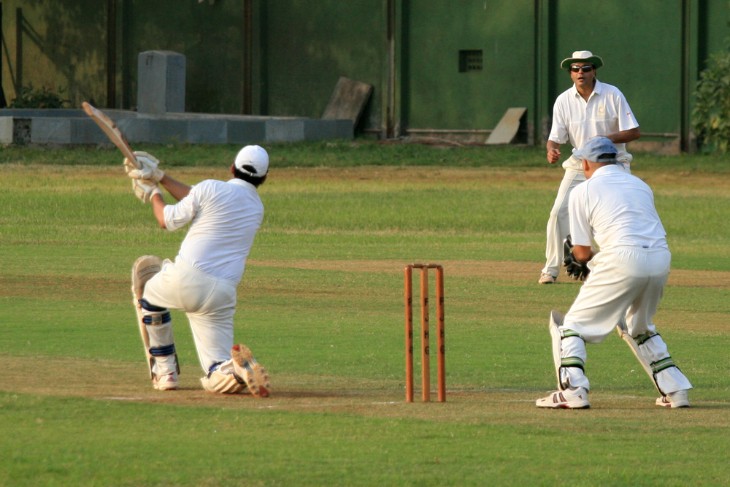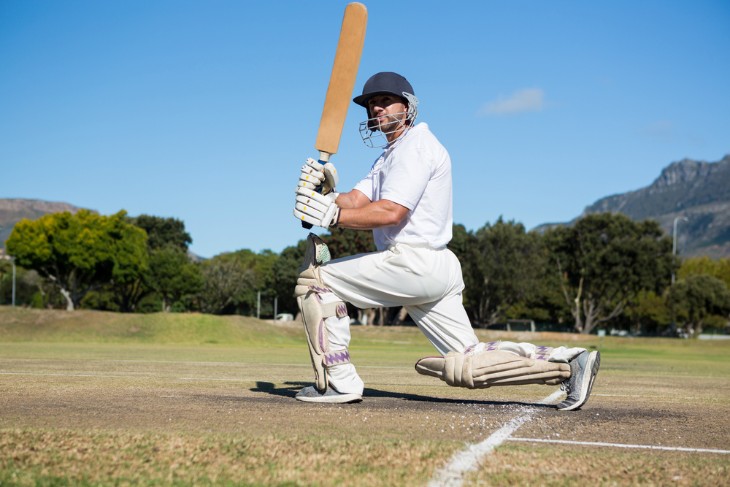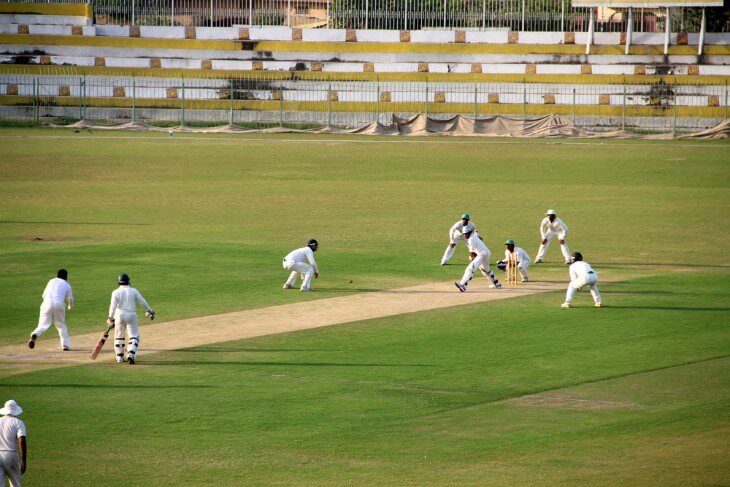Cricket is one of those sports with quite specific rules and, therefore, a lot of specific terms that are used. What is Powerplay In Cricket? What’s its importance? How Does it apply to different formats of cricket? Let’s find out the answers to these and many other questions in the following paragraphs:
What is Powerplay In Cricket?
Powerplay refers to a specific period during the game when the fielding restrictions are applied, allowing the batting team to have an advantage. The powerplay rules vary slightly between different formats of the game, such as One Day Internationals (ODIs) and Twenty20 (T20) matches.
In ODIs, the powerplay typically consists of the first 10 overs of an innings. During this period, only two fielders are allowed outside the 30-yard circle (in the outfield), which means that the batting team has an opportunity to score more runs as there are fewer fielders patrolling the boundary.
In T20 matches, the powerplay is shortened to the first six overs of the innings. During these six overs, the same rule applies: only two fielders are allowed outside the 30-yard circle. This rule is designed to encourage aggressive and entertaining cricket, as batsmen are more likely to play attacking shots without the risk of fielders on the boundary-stopping easy runs.
After the powerplay period ends, the fielding team can spread out the fielders, and more players are allowed outside the 30-yard circle. This makes it harder for the batting team to score boundaries, and the game often shifts gears as a result.
It's important to note that powerplay rules can change based on the regulations set by the governing bodies of cricket, so there might be variations in different tournaments or leagues.
Powerplay in Different Formats of Cricket
In cricket, a powerplay is a period during the match when certain fielding restrictions are applied, allowing the batting team an opportunity to score more runs. However, the impact of powerplay can vary a lot in different formats of cricket. What is powerplay in cricket and how does it apply to different formats of the game? That’s the next question that comes to mind.
The concept of powerplay varies in different formats of the game, mainly One Day Internationals (ODIs) and Twenty20 (T20) matches. Let's explore the most important aspects and differences in each format.
One Day Internationals (ODIs):
In ODIs, the powerplay is divided into three segments:
1. First Powerplay (Overs 1-10): During the first 10 overs of the innings, only two fielders are allowed outside the 30-yard circle. This restriction encourages aggressive batting, as there are fewer fielders patrolling the boundaries. Batsmen often target boundaries, aiming to maximize the score.
2. Second Powerplay (Overs 11-40): After the first 10 overs, the fielding restrictions are lifted, allowing up to four fielders outside the 30-yard circle. During this phase, batting teams focus on building partnerships and consolidating the innings.
3. Third Powerplay (Overs 41-50): In the final 10 overs, another powerplay can be taken, which means the fielding restrictions are again applied, allowing only two fielders outside the 30-yard circle. Teams often use this powerplay to accelerate the scoring, attempting to set a competitive target for the opposition.
Twenty20 (T20) Matches:
In T20 cricket, the powerplay is shorter and more intense:
First Powerplay (Overs 1-6): The first six overs of the innings are designated as the powerplay in T20 matches. During this period, only two fielders are allowed outside the 30-yard circle. Batsmen aim to score quickly, frequently playing aggressive shots to capitalize on the fielding restrictions. This phase often sets the tone for the entire innings.

Differences Between Formats:
- Duration: In ODIs, the powerplay is longer, spanning 10 overs at the beginning of the innings. In T20 matches, the powerplay lasts for just 6 overs, making it a more intense and high-pressure period.
- Fielding Restrictions: The number of overs and fielding restrictions differ between the formats. ODIs have multiple powerplay phases, allowing teams to plan their strategies based on the stage of the innings. In T20s, there's only one powerplay, making it a critical period for both batting and bowling sides.
- Strategy: Teams in both formats strategize their game plan around the powerplay. In ODIs, the middle powerplay allows for a balance between aggression and consolidation, while in T20s, the entire batting side tends to play aggressively from the beginning due to the shorter duration of the powerplay.
Other Important Aspects of Powerplay in Cricket
1. Momentum and Psychological Impact:
- Early Momentum: A strong performance during the powerplay, either through aggressive batting or by taking quick wickets (from the bowling side), can build early momentum. This can affect the confidence and morale of both teams.
- Psychological Advantage: Success or failure during the powerplay can set the tone for the rest of the innings. Teams often gain a psychological advantage by dominating the powerplay, putting pressure on the opposition.
2. Role of Opening Batsmen:
- Explosive Start: Openers play a crucial role during the powerplay. Aggressive openers can exploit the fielding restrictions, scoring boundaries and giving the team a quick start.
- Setting the Platform: Even if they don’t score rapidly, openers need to ensure they do not lose wickets, setting a stable platform for the middle-order batsmen.
3. Bowling and Fielding Strategies:
- Variation in Bowling: Bowlers often use variations in pace, swing, and spin to deceive batsmen during the powerplay. Skilful bowling can restrict the scoring even with fielding restrictions.
- Tight Fielding: Fielders need to be agile and sharp during the powerplay. Stopping boundaries and quick throws to the wicketkeeper or bowler can create pressure on batsmen.
4. Impact on Team Total:
- High Scoring Opportunities: A strong powerplay can significantly boost the team’s total score. Many matches are won or lost based on how well a team performs during this phase.
- Recovery: On the flip side, if a team loses early wickets in the powerplay, subsequent batsmen may need to focus on rebuilding the innings, leading to a lower total than initially anticipated.
5. Change in Bowling Dynamics:
- Bowling Rotations: After the powerplay, the bowling team can strategize based on the game's situation. Captains can rotate their bowlers based on matchups against specific batsmen.
- Fielding Spread: Once the powerplay ends, fielding restrictions are lifted, allowing more fielders outside the inner circle. Bowlers often change their lengths and lines to adapt to the new fielding positions.
6. Impact on Chasing Teams
The impact of the powerplay on chasing teams in limited-overs cricket is significant and can shape the course of the entire innings. Here's a closer look at how the powerplay affects chasing teams:
i) Required Run Rate Pressure:
- Early Dismissals: If chasing teams lose wickets during the powerplay, especially key batsmen, the required run rate can become daunting. New batsmen often need some time to settle in, and during this period, if the required rate is high, it can create immense pressure.
ii) Strategic Adjustments:
- Aggressive Start: Chasing teams often send their most aggressive batsmen to face the powerplay, hoping for a quick start. Explosive batting during the powerplay can not only reduce the required run rate but also demoralize the bowling side.
- Building Partnerships: If the chasing team avoids early wickets, the powerplay provides an opportunity to build partnerships. Batsmen can rotate strikes and look for occasional boundaries to keep up with the required rate.
iii) Decision-Making for Captains and Batsmen:
- Decision on Powerplay Utilization: Chasing teams, especially in T20s, often utilize their powerplay judiciously. The decision of when to take the powerplay (in case it’s not taken at the beginning) depends on the match situation and the chasing team’s strategy.
- Choosing the Right Batsmen: Captains need to choose the right batsmen to face the powerplay. Players skilled in power-hitting and dealing with aggressive bowling often take the field during this period.
iv) Impact on Middle Overs:
- Building Momentum: A good powerplay, where the chasing team scores well without losing many wickets, sets the stage for building momentum in the middle overs. Batsmen can then focus on rotating the strike and occasional big hits.
- Recovering from Early Losses: If early wickets fall during the powerplay, the middle overs become about recovery. Batsmen need to rebuild the innings, ensuring there is a solid platform for the final assault in the death overs.
v) Chasing in Close Matches:
- Nail-biting Situations: In close matches, the powerplay becomes even more crucial. Chasing teams need to carefully balance aggression with caution. Losing wickets early during the powerplay can be disastrous in tight run-chases.
- Pressure Situations: Bowlers, especially the ones with the ability to swing or seam the ball, can exploit pressure situations during the powerplay. Batsmen need to display solid techniques and mental resilience to counter these challenges.
vi) Chasing Huge Targets:
- Explosive Start is Key: When chasing a substantial total, an explosive start in the powerplay is almost mandatory. Chasing teams need to score quickly and consistently during the powerplay to keep up with the required run rate.
- Early Boundaries are Crucial: Boundaries in the powerplay are invaluable when chasing big totals. Chasing teams often look to target specific bowlers during this period to maximize their scoring opportunities.
7. Impact on Player Statistics
The powerplay phase in limited-overs cricket has a profound impact on player statistics, shaping the careers and reputations of batsmen and bowlers alike. For batsmen, excelling during the powerplay can significantly boost their strike rates and averages. Batsmen who consistently score briskly in the powerplay overs are often sought after in T20 leagues and limited-overs international cricket. These players tend to have high strike rates, indicating their ability to score quickly, especially when fielding restrictions are in place. Moreover, powerplay specialists often possess a wide array of aggressive shots and excellent placement skills, allowing them to find gaps in the field and hit boundaries regularly. Such performances bolster their reputation as effective powerplay players, making them invaluable assets to their teams. Additionally, a high average during the powerplay suggests a batsman's ability to convert starts into substantial scores, showcasing their consistency and reliability in crucial situations.
Conversely, bowlers who excel during the powerplay overs are highly regarded in limited-overs cricket. Bowlers who consistently take wickets or maintain low economy rates during this phase are considered powerplay specialists. A high number of wickets during the powerplay indicates a bowler’s ability to provide crucial breakthroughs, often disrupting the opposition’s momentum and setting the tone for the innings. Furthermore, bowlers who can control the run flow during the powerplay, even without taking wickets, are equally valuable. They create pressure on the batting side, forcing them to take risks and make mistakes. Maintaining a low economy rate during the powerplay is a testament to a bowler's accuracy and ability to adapt to different match situations. Bowlers with impressive powerplay statistics are often key players in their teams' bowling line-ups, relied upon to deliver crucial performances in the initial overs of the innings.
Powerplay statistics also play a vital role in the overall assessment of a player's performance in limited-overs cricket. A balanced combination of strong powerplay batting and bowling statistics can elevate a player's standing in the sport, showcasing their ability to contribute significantly in the crucial early overs of the game. These statistics are closely analyzed by team management, selectors, and analysts, shaping team compositions and strategies. Players who consistently perform well during the powerplay often become match-winners for their teams, leaving a lasting impact on the outcomes of matches and tournaments.
Summary
What is powerplay in cricket and why is it so important? To summarize, the powerplay is a crucial phase in limited-overs formats where fielding restrictions allow the batting side an advantage to score quickly. The powerplay, spanning the initial overs of the innings, sets the tone for the match. For batsmen, excelling in the powerplay boosts their strike rates and averages, highlighting their ability to score briskly and consistently. Powerplay specialists, both batsmen and bowlers, are highly valued for their ability to either aggressively score boundaries or take wickets, respectively. These statistics influence team strategies, player selections, and match outcomes, making the powerplay an integral element in modern limited-overs cricket.
For more information:



